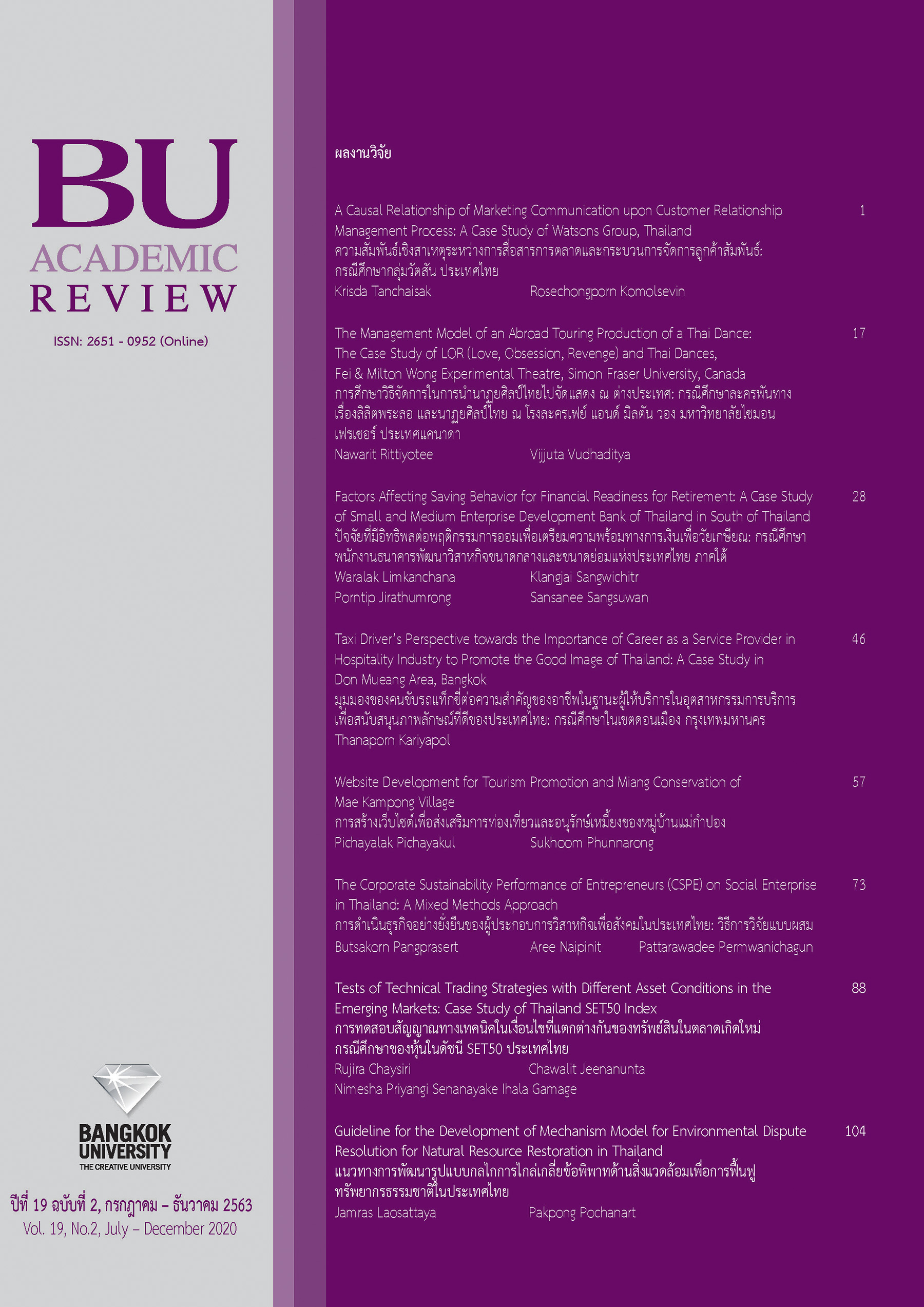Energy Conservation Study for PD A Lord Residence Multi Residential Building Design
Main Article Content
Abstract
Multi residential building are created by the demand for the small and limited area in the capital and major cities of which the higher electricity consumption is found. This research investigated the apartment at PD A Lord Residence Ladprao 130. Using the computational and experimental research, this study aims to simulate the appropriate model in order to save energy by preliminary design and architectural forms, design alternatives, room layout, and openings design and shading devices. The findings revealed that the design of a good building envelope system can significantly reduce energy use. The related factors included material selection, determining the style and size of openings and solid walls or Window to wall ratio and also shading devices design.
Article Details
The manuscript submitted for publication must be the original version, submitted only to this particular journal with no prior acceptance for publication elsewhere in other academic journals. The manuscript must also not violate the copyright issue by means of plagiarism.
References
Areemit, N. (2015). Shading Coefficient: SC [Computer software]. Bangkok: Architects 49 Limited.
Bunyathikan, S. (2002). Theknik kānʻō̜kbǣp bān prayat phalangngān phư̄a khunnaphāp chīwit thī dī
kwā [Techniques for designing energy-saving houses for a better quality of life] (2nd ed.).
Bangkok: O.S. Printing House.
Coordinating Center for Energy Conservation Building Design. (2017). Khūmư̄ nǣothāng kānʻō̜kbǣp
ʻākhān phư̄a kānʻanurak phalangngān [Guidebook building evaluation procedures for energy
conservation]. Retrieved October 20, 2019, from http://webkc.dede.
go.th/testmax/kb01-list.
Energy Policy and Planning Office [EPPO]. (2003). Nātāng læ kansāt [Window and shading device].
Retrieved October 20, 2019, http://www.eppo.go.th/index.php/th/search?searchword=
หน้าต่างและกันสาด&searchphrase=all
Energy Policy and Planning Office [EPPO]. (2019). Rāingān sathiti phalangngān khō̜ng prathēt Thai
sō̜ngphanhārō̜ihoksipʻet [Energy statistics of Thailand 2018]. Retrieved October
, 2019, from http://www.eppo.go.th/index.php/th/informationservices/ct-menu-item-56?
orders[publishUp]=publishUp&issearch=1.
Information and Communication Technology Center [ICT]. (2019). Sathānakān phāp ngō̜ngā narā yō̜
dư̄an Makarākhom pī sō̜ng hā hok sō̜ng [Energy situation January 2019].
Retrieved October 20, 2019, from http://www.eppo.go.th/epposite/index.php
/th/petroleum/item/14647-monthly-01-2019.
Ministry of Energy. (2009, February 20). Rātchakitčhānubēksā [Royal Thai Government Gazette],
(12), 9-15.
Nittaya, S. (2002). Kānʻō̜kbǣp ʻākhān samrap phūmiʻākāt khēt rō̜n chư̄n [Tropical design
environment] (2nd ed.). Bangkok: Chulalongkorn University Press.
Rattananvathong, P. (2015). Hā khā SC (Shading Coefficient) dōi chai Sketch Up [Solve for SC
(Shading Coefficient) values by using SketchUp]. Retrieved October 28, 2019, from https://
maipatana.me/tutorials
Real Estate Information Center of Government Housing Bank [REIC]. (2019). Sathānakān talāt
thīyūʻāsai Krung Thēp... - parimonthon trai māt sī pī sō̜ngphanhārō̜ihoksipʻet læ nǣonōm pī
sō̜ngphanhārō̜ihoksipsō̜ng [Overall housing situation in the BMR as 4th Quarter of Year 2018
and 2019]. Retrieved October 20, 2019, from https://www.reic.or.th/Research
Yimrattanaboworn, S. (2013). Rāingān phonngā nawičhai sāngsan khrōngkān ʻākhān phak ʻāsai rūam
Ladprao nưngrō̜isāmsip thanon lātphrāo bāngkapi [Research and creative project of residential building 130 Ladprao road Bangkapi Bangkok]. Bangkok.: Bangkok University.


